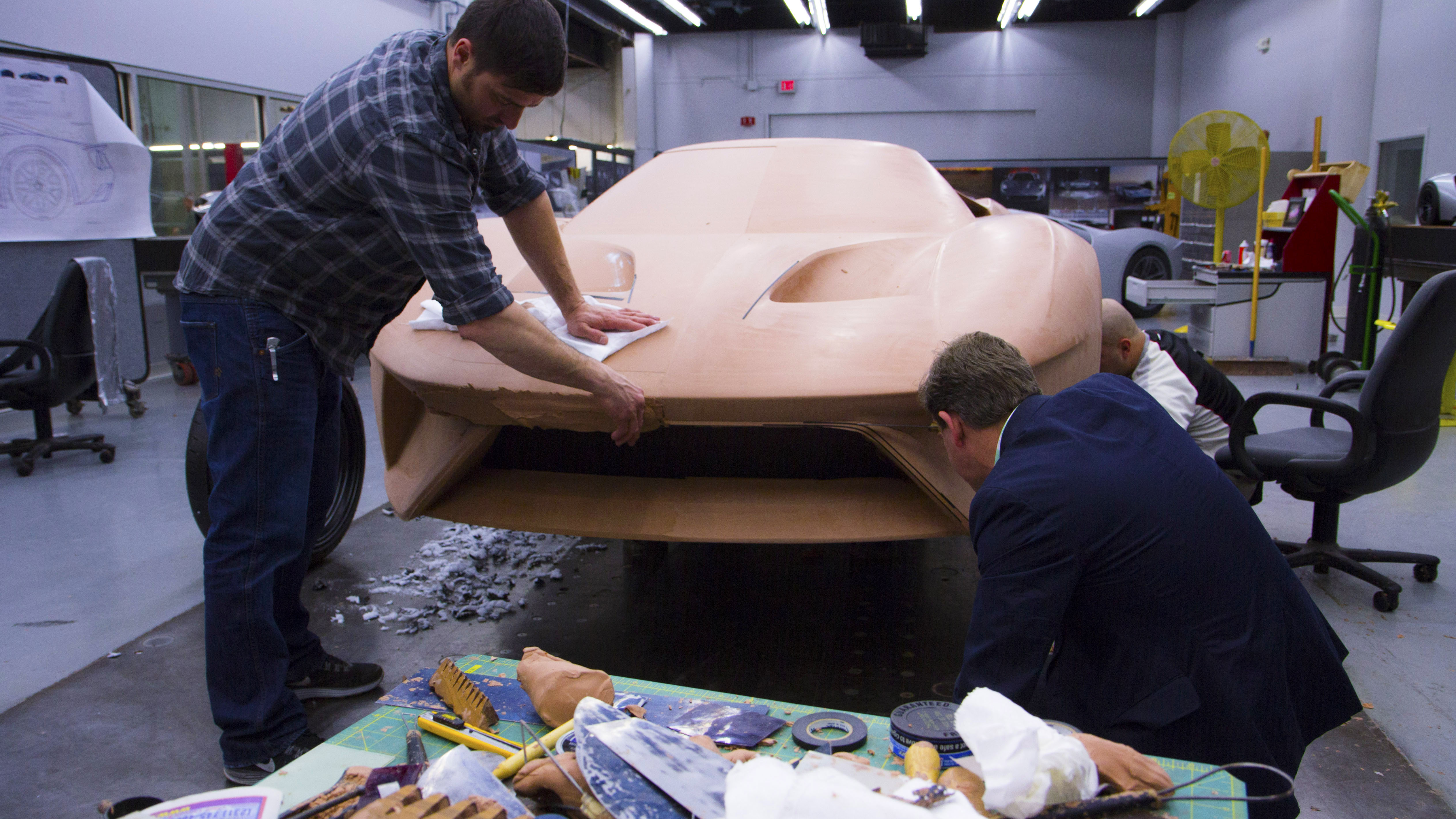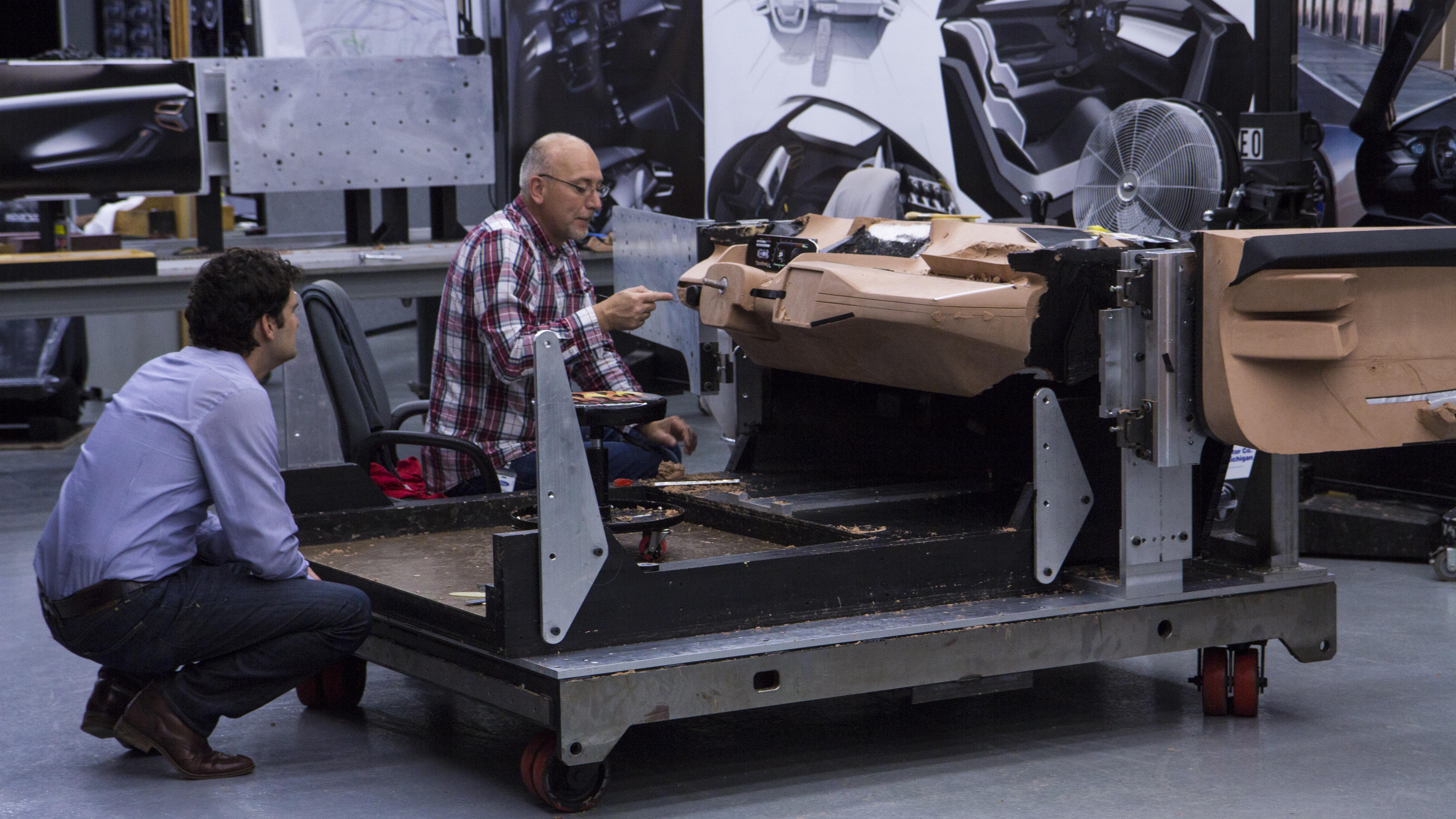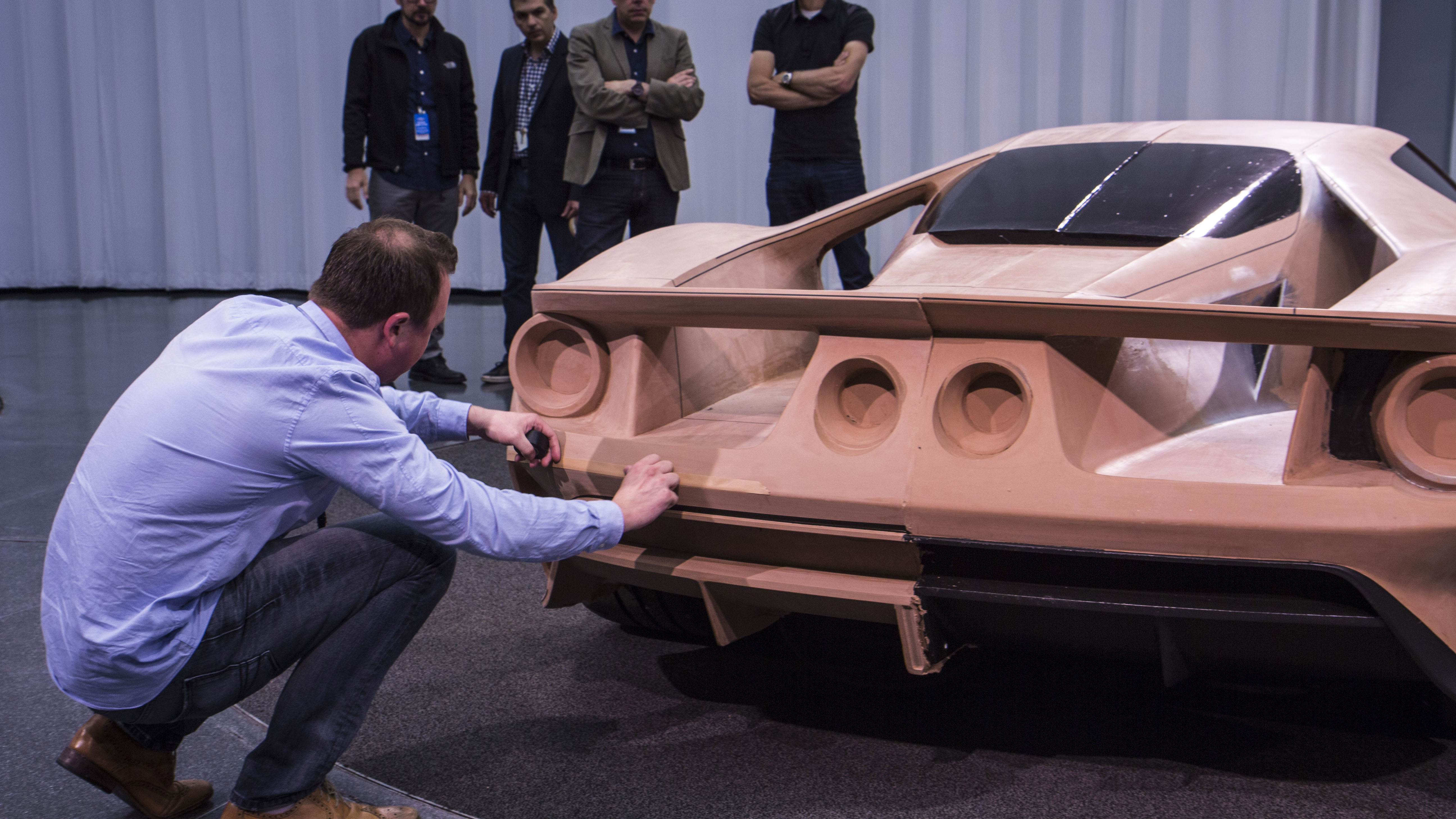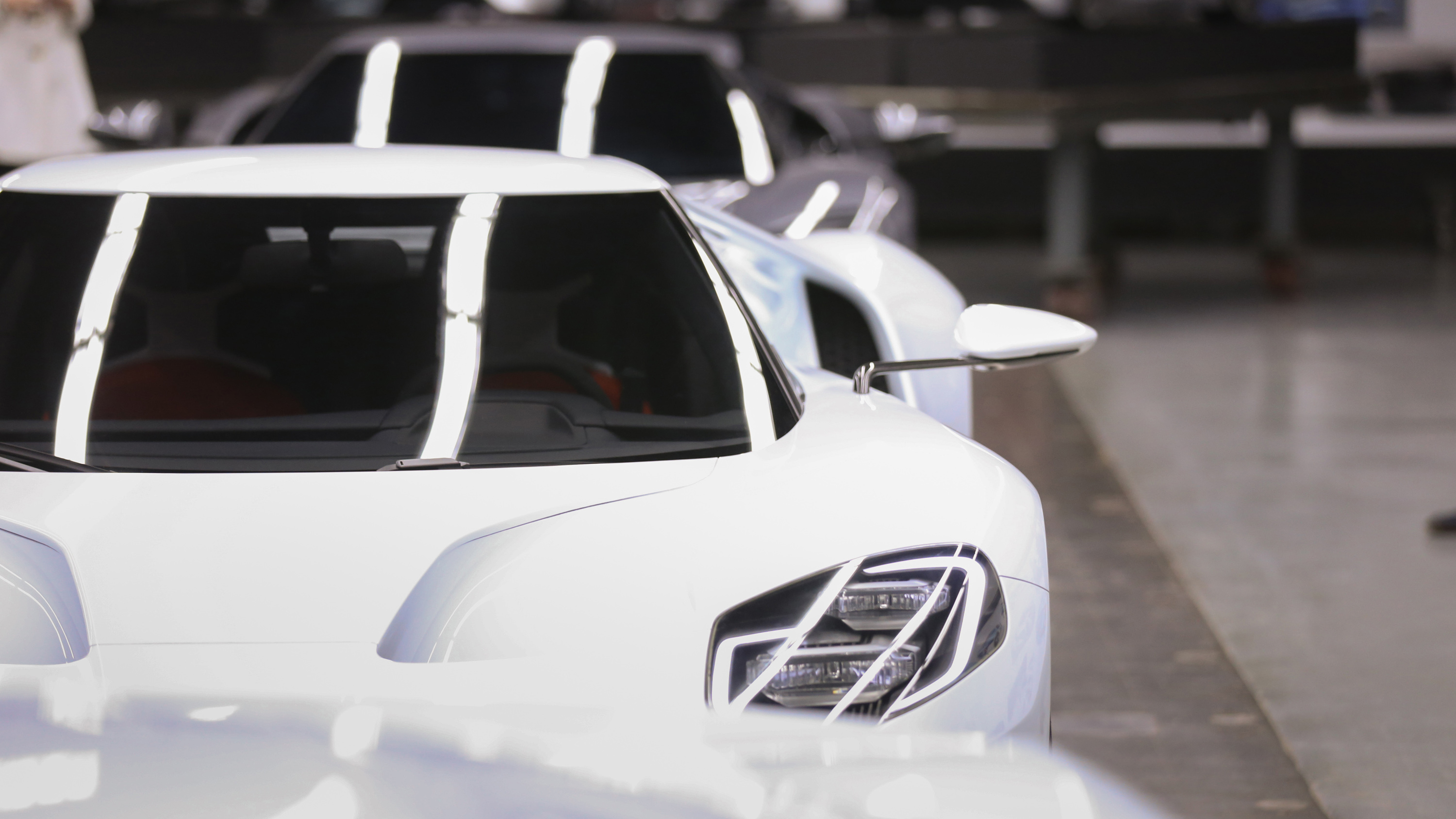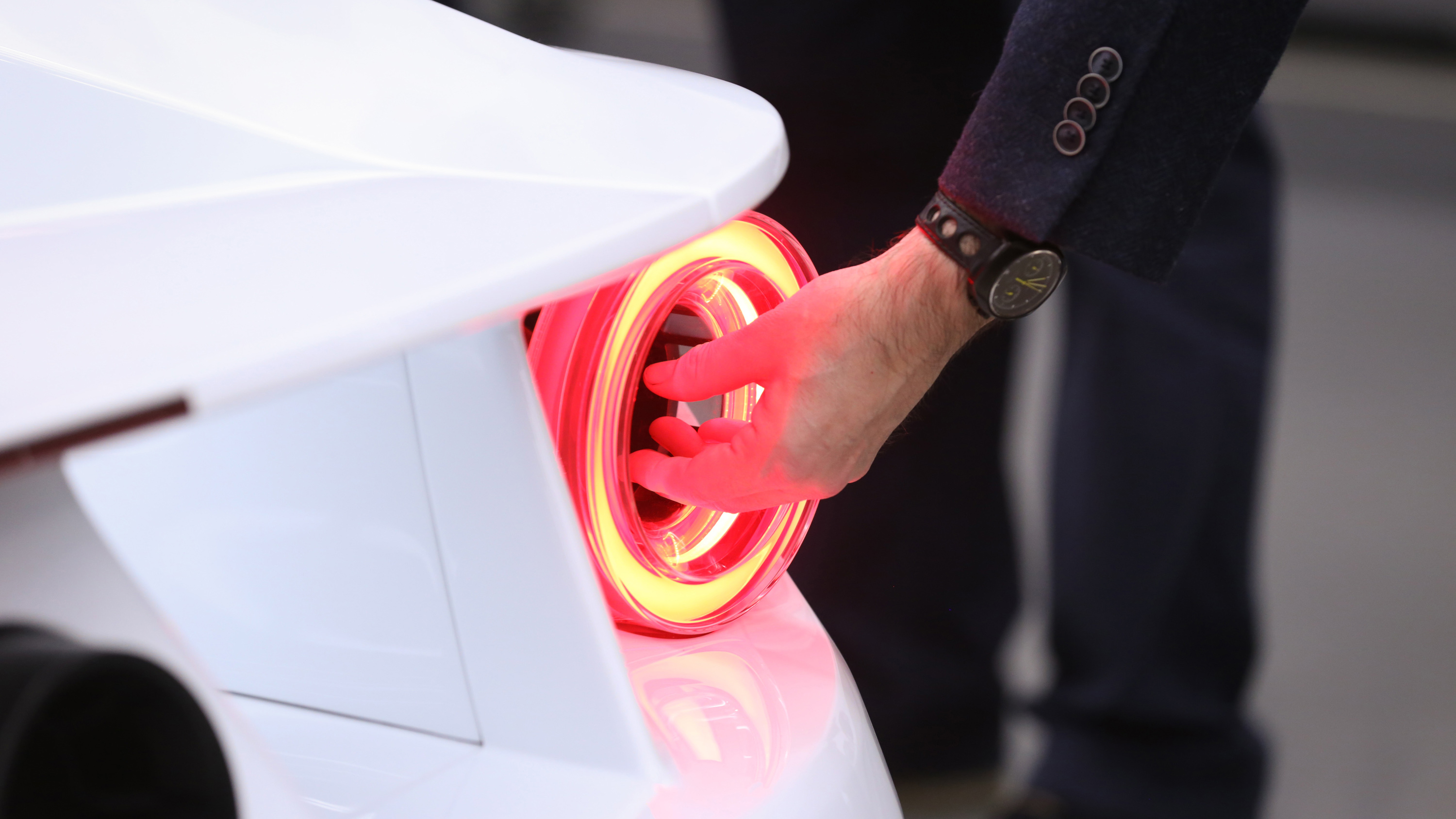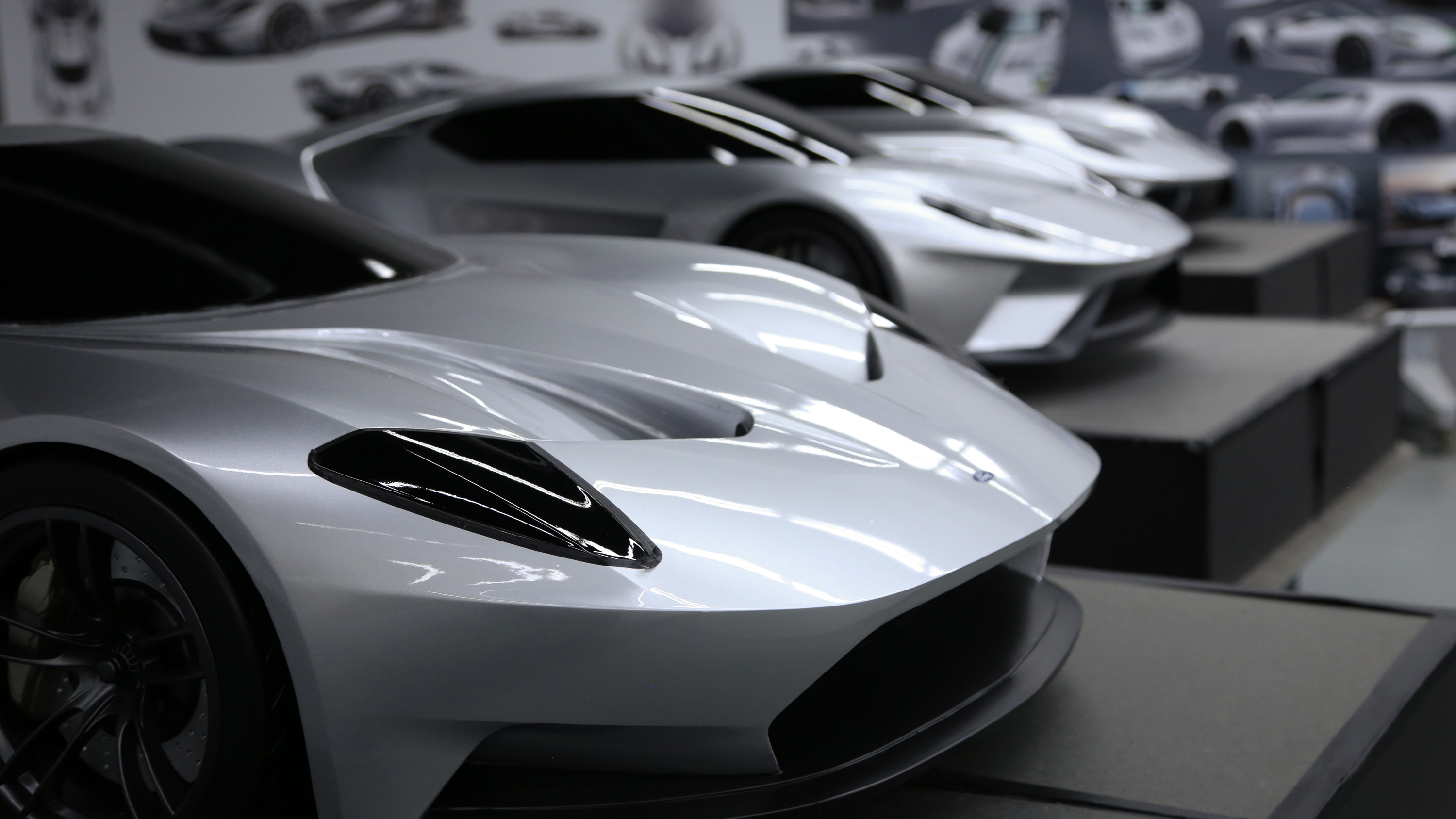
Inside the Ford GT’s secret design bunker
We poke around the secret US design studio where the Ford GT was born
“It's not a gorgeous design studio. It's not this wonderful place with windows and wonderful floors. It was uncomfortable. It was dark. When it rained, it flooded.” So says Chris Svensson, Ford’s Design Director for the Americas. Hard to believe that a car of such potent beauty could emerge from such a place, isn’t it? But emerge it did at the 2015 Detroit motor show and now, a year on, we’ve been granted access to this damp cave of wonders at Ford’s design HQ in Dearborn, Michigan.

Words: Jack Rix
“This was a top secret project. Very few of us had access to it and we weren't allowed to talk about it. So, we created a room outside of the normal studio,” Svensson tells us. “Literally, a handful of twelve people, including some key engineers, had access to the room. We went old school, we had keys. And not until we unveiled the car last year at Detroit, did anybody else in this building know about it.”
Just imagine that level of secrecy for a moment. Keeping schtum from the press is one thing, but the guy you sit next to on your lunch break? It must have been excruciating.
But those were the conditions if you wanted to work on America’s next great supercar. Many of the designers and engineers had other projects on the boil, too, so the GT became extra curricular. Team leaders were pulling 8pm to midnight shifts to get everything done within the ridiculously tight timeframe. Soon though, it will all be worth it. It goes on sale towards the end of 2016, costing around £250,000 for a hand-picked few.
As we’re led into the studio it is indeed dingy, windowless, but fortunately dry as a bone. There are three full-scale prototypes lined up nose to tail along the length of the room: a painted clay model, the 2015 Detroit show car re-coloured white, and a final verification model milled out of solid aluminium. Display boards are plastered with sketches arranged in chronological order, starting with the three main themes (new generation GT, performance efficiency and modern seduction) that eventually get fleshed out and whittled down to the final design – both for the exterior and the interior. It’s reassuring to note that in this digital age designers still get the crayons out and sketch by hand.
Chris hands over to Jamal Hameedi, chief engineer for Ford performance. “Where we started was aerodynamic efficiency. If anyone knows anything about Le Mans, it’s always low down force that’s efficient. I think that's what makes the Ford GT more special than the Ferrari or the McLaren is that the purpose of this car, and the efficiency of the racing, goes right down to the very core of its existence. For example, the powertrain selection was unusual because it was a secondary criteria to the main aerodynamic signature of the car. The aerodynamics were developed first, and then we picked the most efficient Eco boost engine that we could find for that package.”
Other supercar manufacturers might have weekend bags, or golf clubs... we didn't have those kind of targets.
It’s fascinating to hear how on this project, more than any other in Ford’s history, engineers and designers had to work together in real time, living in each other’s pockets. But assuming the GT performs like Ford claims, engineering perfection has never looked so good. The huge negative spaces below the pontoons were agreed early, Svensson says. The “teardrop profile” is seen all the time on LMP1 cars, but rarely on road cars and is the most efficient way to slip through the air. There are other tricks too: air gulped into vents ahead of the rear wheels is expelled through the middle of the circular taillights – a perfect example of function complementing design.
Of course, it had to be recognisable as the GT40’s offspring, hence the square headlights, cut back leading edge on the nose, wraparound windscreen and circular taillights with raised twin pipes between them were non-negotiable. “At no point did we talk about retro on this car. We talked about the lineage Ford has, history, and building on that history, but doing something very different to anybody else,” Svensson says. “We didn't want to just do another Ferrari, another Lamborghini, another Mclaren. We wanted to do our own thing.”
The downside to this wonderfully packaged piece of design? “Our targets didn't include things like luggage. It didn't include creature comforts. Other supercar manufacturers might have weekend bags, or golf clubs, we didn't have those kind of targets.”
Top Gear
Newsletter
Thank you for subscribing to our newsletter. Look out for your regular round-up of news, reviews and offers in your inbox.
Get all the latest news, reviews and exclusives, direct to your inbox.
Peering down at the 600bhp-odd 3.5-litre V6 turbo through the glass engine cover, there’s precious little space to spare, but shouldn’t a true American supercar always use a V8? Hameedi disagrees. “Le Mans is very much a full economy race. The power level for this engine on a homologated race car is around 500bhp, so, you can easily reach that with a V6, and Eco-boost technology makes it extremely fuel efficient. Its mass per bhp, and mass per lb ft of torque, as well as its centre of gravity, all of those are vastly superior to a V8. If the other guys want to haul around two cylinders not doing anything, then go ahead, but a six cylinder is all we need.”
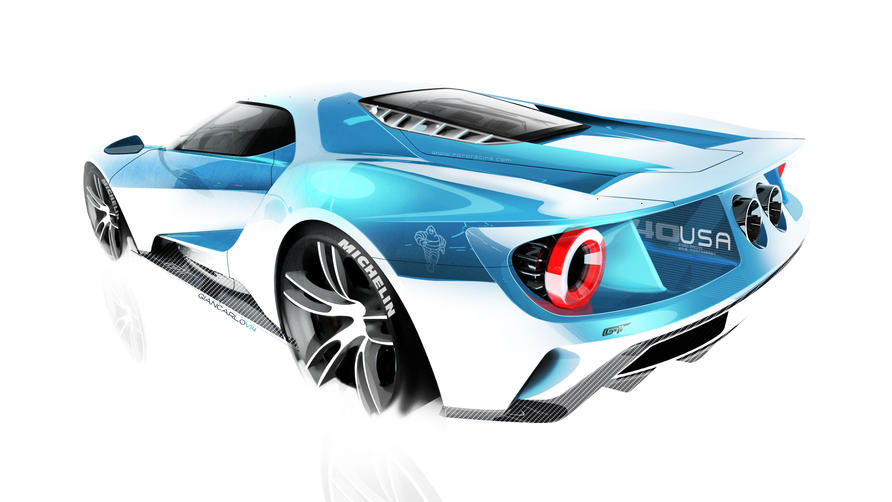
The defining characteristic of the GT’s interior is a fixed seating position – allowing the bodywork to be shrink-wrapped around the occupants. Adjustment comes from the electrically-moveable pedal box and a telescopic steering wheel that can shift back and forth by up to 200mm. Tight dimensions in the cabin defined the components that were chosen, too, as Amko Leenarts, global interior design director, explains. “That is why we opted for a six and a half inch touch screen and a very small steering wheel that’s cut on the top and cut on the bottom: cut on the top for vision, and we cut on the bottom because otherwise you couldn't get in the car.

“We opted for a visual cluster with different driving modes," he adds. "We have sport, then you have track, we’ve got a wet mode, then V-max mode which is really about top speed. The car lowers down.”
It dawns on me that these three guys have been talking relentlessly for over an hour, unscripted, unprompted, just spewing enthusiasm on every tiny detail of this extraordinary thing. You can feel the passion in this small, leaky room, and not just from the team who have occupied it for the last 15 months; it oozes from every sketch, every scale model, every element of the finished car.
It’s not a gorgeous design studio, but something beautiful has come out of it.
Trending this week
- Car Review
BMW 1 Series
- Top Gear's Top 9
Nine dreadful bits of 'homeware' made by carmakers







